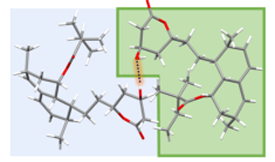
Real-Time In situ XRD Study of Simvastatin Crystallization in Levitated Droplets
M.T. Heilmann, R.G. Simões, C.E.S. Bernardes, Y. Ramisch, R. Bienert, M. Röllig, F. Emmerling M.E. Minas da Piedade
Cryst. Growth Des. 2021, 21, 4665−4673.
Abstract
Simvastatin (SV) is an important active pharmaceutical ingredient (API) for treatment of hyperlipidemias, which is known to exist in different crystalline and amorphous phases. It is, therefore, an interesting model to investigate how the outcome of evaporative crystallization in the contactless environment of an acoustically levitated droplet may be influenced by key experimental conditions, such as temperature, solvent properties (e.g., polarity and hygroscopicity), and dynamics of the evaporation process. Here, we describe a real-time and in situ study of simvastatin evaporative crystallization from droplets of three solvents that differ in volatility, polarity, and protic character (acetone, ethanol, and ethyl acetate). The droplet monitorization relied on synchrotron X-ray diffraction (XRD), Raman spectroscopy, imaging, and thermographic analysis. A pronounced solvent-dependent behavior was observed. In ethanol, a simvastatin amorphous gel-like material was produced, which showed no tendency for crystallization over time; in ethyl acetate, a glassy material was formed, which crystallized on storage over a two-week period to yield simvastatin form I; and in acetone, form I crystallized upon solvent evaporation without any evident presence of a stable amorphous intermediate. The XRD and Raman results further suggested that the persistent amorphous phase obtained from ethanol and the amorphous precrystallization intermediate formed in ethyl acetate were similar. Thermographic analysis indicated that the evaporation process was accompanied by a considerable temperature decrease of the droplet surface, whose magnitude and rate correlated with the solvent volatility (acetone > ethyl acetate > ethanol). The combined thermographic and XRD results also suggested that, as the cooling effect increased, so did the amount of residual water (most likely captured from the atmosphere) remaining in the droplet after the organic solvent was lost. Finally, the interpretation of the water fingerprint in the XRD time profiles was aided by molecular dynamics simulations, which also provided insights into the possible role of H2O as an antisolvent that facilitates simvastatin crystallization
Return Previous Next